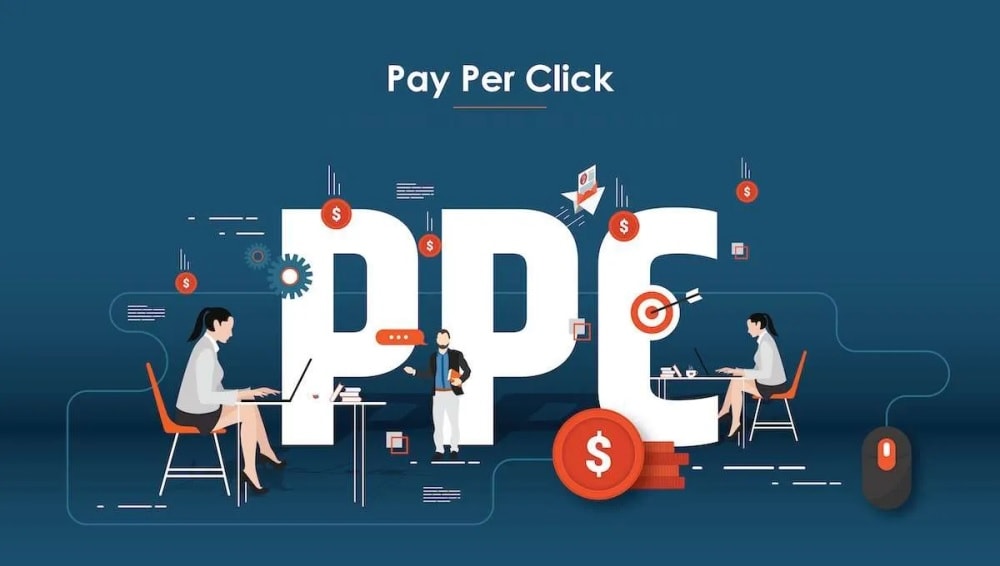One of the aspects that adds to the complexity of digital advertising is that user interfaces (UIs) undergo frequent changes, much like algorithms. Keeping up with these continuous modifications and the tasks essential for optimizing account performance can be quite demanding.
Although these might be familiar to a few, they constitute the most prevalent “unnoticed opportunities”.

Competitor Audiences
What prompts individuals to initiate a product search? Which brands do they incline toward when conducting research, exploration, or validation? How do these interactions influence their eventual purchasing choices?
An often underestimated resource within the realm of consumer intent is the “competitor audience segment” targeting. Accessible within the audience manager, this feature empowers advertisers to include websites frequently frequented by their target audience.
While this functionality is seamlessly integrated into Performance Max (PMAX) and display campaigns, it regrettably remains unavailable for standalone search targeting. You have the flexibility to list multiple websites or customer segments. Google then identifies users who have visited those sites (or similar ones) as ideal targets for your advertisements.
Enhance this strategy with a placement exclusion list to ensure that your ads are not displayed on undesired pages, be it your own website or potentially a direct competitor’s content.
You’re granted the choice to either exclude or specifically target a competitor. The brilliance behind this approach lies in leveraging your competitor’s marketing endeavours and budget, redirecting the interest they’ve cultivated, and potentially converting it into a profitable opportunity for your own benefit.
In essence, the “competitor audience segment” empowers you to strategically position your campaigns, capitalizing on the groundwork laid by your competitors and potentially capturing a share of their audience.
Negative Keywords at All Levels of Structure
Most experienced PPC practitioners naturally recognize the significance of negative keywords. Nevertheless, I have recently noticed a substantial number of campaigns that either lack negative keywords altogether or use them sparingly.
Why is the meticulous inclusion of negative keywords so important?
- Close Variants: Negative keywords act as a defense against these close variants, guaranteeing that your ads are triggered by the most pertinent search terms.
- Budget Optimization: Negative keywords play a pivotal role in allocating your budget. The majority of accounts need to shift their budget from one campaign or ad group to another.
Without well-defined negative keywords, there’s a genuine risk of overspending on less effective ideas while overlooking more promising ones.
While negative keywords may not be a groundbreaking concept for many, their consistent and thoughtful application can be the difference between a finely-tuned campaign and one that misdirects valuable resources.
Therefore, irrespective of whether you consider this feature basic or advanced, it’s advisable to periodically revisit and refine your negative keywords.
Using Search Term Filters
Over the years, the value of the search terms report has diminished. Our ability to gain insights from search terms has decreased, making it more challenging to introduce negative keywords or add new keyword targets, especially for lengthy queries. Comparing the keywords we’re targeting with the actual search terms is essential to ensure we’re bidding on the most effective version of the keyword.
As account structures evolve, placing a greater emphasis on audiences rather than just keywords, the search terms report becomes crucial for determining which keywords to prioritize, instead of solely relying on suggestions from the keyword planner.
To use this:
- Navigate to the “attributes” section in your interface.
- Filter by attribute and the specific search term in question.
- Enable the column that displays the keyword responsible for triggering the search term.
- It’s also advisable to incorporate “match type.” This provides insights into the frequency of close variants activated by your campaigns.
Depending on your campaign type and account structure, a surge in close variants might indicate a lack of negative keywords protecting your ad groups.
This diagnostic is essential to ensure the presence of negative keywords at the appropriate levels, and it smoothly leads us to the next overlooked feature, which we’ll discuss next.
Audience And Placement Targets & Exclusions
It’s disheartening to conduct campaign audits and discover glaring omissions in audience targeting and exclusions, as well as specific placement targets and exclusions. Such oversights deprive campaigns of one of their most potent tools for ensuring precise budget allocation and meaningful engagement with the ideal customer.
Here’s the breakdown:
Audience Targets:
If you’re neglecting to incorporate audience targets, whether using “Target and Observe” or “Observe” settings, you’re essentially opting for a broader traffic pool.
The reality is that not everyone is your potential customer. Sometimes, the complexity of the interface can make these settings less apparent, which might explain their occasional neglect. However, understanding their placement is crucial.
Exclusions for Visual Content:
Switch between topics, placements, and content keywords to ensure necessary exclusions, rather than relying solely on defaults.
Another valuable tool is the “Where and When Ad Served” report (still in open beta for some users), which provides insights into which placements to target or exclude.
For PMAX Campaigns:
Audience signals are crucial in the initial stages of a PMAX campaign but tend to diminish in impact over time. To make adjustments, navigate to the Asset Group section and click the pencil icon on the right. Inside, you’ll have the ability to edit your audience signals.
While the layout may not be as intuitive as other campaign types, it’s essential to familiarize yourself with it for optimizing Performance Max campaigns. Remember, blending your data with Google’s signals based on various audience settings can amplify your campaign’s impact.
Audience Library and Manager:
This serves as your gateway to creating custom audiences. It enables you to incorporate interest targets and even upload conversions, allowing you to generate audiences from past converters. In essence, while these functionalities may not be entirely “hidden,” their full potential is often overlooked.
Diving deeper and using them judiciously can be the difference between a campaign that merely runs and one that genuinely resonates.
Ad Group Vs Campaign-Level Settings Across Platforms
Navigating ad settings can be quite a challenge, especially when you’re juggling various ad networks. Each network comes with its own unique hierarchy of campaign and ad group settings, making it easy to overlook critical configurations.
Let’s explore this often-unnoticed feature by dissecting the nuances across popular platforms.
Google Ads: Campaign-Centric
Google places primary emphasis on campaign-level settings for schedules, budgets, location targeting, and negative keywords.
You will likely need to create multiple campaigns, each with distinct budgets tailored to specific objectives. It’s advisable to have fewer ad groups per campaign, typically ranging from five to seven, depending on the volume you’re targeting.
Microsoft Ads: A Blend Of Both
While sharing similarities with Google by requiring most settings at the campaign level, Microsoft Ads offers more flexibility at the ad group level.
Here, you can override settings for locations and schedules and make specific placement choices. This flexibility allows for a more customized advertising strategy.
Facebook (Meta) Ads: Flexible Objectives
Facebook doesn’t confine you to campaign or ad group settings. You can opt for either Campaign Budget Optimizer, which operates much like Google Ads, or allocate the budget per ad and target.
The approach you select significantly affects your spending. This flexibility means you can support broad objectives or conduct extensive creative testing, but be prepared for varied budget implications.
LinkedIn Ads: Ad Set-Focused
LinkedIn gives precedence to ad set settings, allowing you to make most decisions at this level. Campaigns typically govern asset associations. If you’re advertising on LinkedIn, be prepared to establish a robust ad group structure that caters to each significant part of your business.
Amazon Ads: Product-Based Budgeting
Amazon’s approach revolves around the products you wish to promote, rather than campaign or ad group settings. While you have limitations in location targeting, Amazon excels in providing a robust first-party audience network. Your budget allocation is driven by your product selection.
No matter which ad network you’re using, it’s essential to grasp these underlying structures for more efficient planning and budget management. Understanding these “hidden” settings can have a substantial impact on the efficiency and effectiveness of your advertising campaigns.
Conversion Tracking
Comprehending and optimizing your conversion settings is pivotal to ensuring that the data you depend on is not only reliable but also actionable.
The Significance of Trustworthy Data
In a modelled tracking environment, placing trust in the data you collect becomes of paramount importance. A common oversight is the default 30-second window for phone call conversions, which proves impractical for most businesses.
A more realistic timeframe would be two to three minutes, or even longer, particularly for specific industries. If you neglect to adjust this setting, you risk introducing inaccurate data into both your bidding strategies and reporting.
Navigating Primary and Secondary Conversion Settings
Google automatically designates certain conversion actions as primary. While some of these cannot be modified, others should be tailored to align with your business requirements. Primary conversions exert an influence on the algorithm and are featured in your reports.
Secondary conversions are recorded in the ‘all conversions’ category but do not impact the algorithm or primary reporting metrics.
Configuring Primary and Secondary Settings
Contrary to what might be expected, these adjustments are made at the “goal level,” rather than the “conversion action level.”
Once you’ve identified your desired conversion actions, whether they are imported from GA4 or native actions, the process involves:
- Selecting “Edit goal.”
- Switching between primary and secondary for each conversion action based on your preferences.
Properly configured conversion settings ensure that you are measuring what genuinely matters to your business. By filtering your data by conversion action, you can discern the quantity and cost of conversions that hold significance to your objectives.
Leveraging Segments for Thorough Analysis
Segments provide you with the means to delve deeper into your campaign data, allowing you to examine:
- Network
- Conversion Data
- Time
- Location
- Device
These segments serve the purpose of uncovering whether there are any inaccuracies in the averages.
For instance, if you observe what appears to be a low click-through rate (CTR) or cost per click (CPC) while having Search Partners with Display Expansion enabled, it may be affecting your statistics.
Using segments will offer you a more precise perspective of the developments in your account, enabling you to implement substantial optimizations.
Attributes for Shopping in Merchant Center
Google Merchant Center frequently introduces new attributes for feed customization. Incorporating a monthly check-in can assist in maintaining feed quality and setting your offerings apart from competitors.
Consistently enhancing and customizing your feeds with additional attributes can have a substantial impact on the precision of your campaign targeting and enhance your return on ad spend (ROAS).
Hidden Reports
Google Ads has achieved remarkable success largely due to the valuable data it provides to advertisers. However, in recent years, some of these reports have been either deprecated or consolidated, making them more challenging to act upon. While not all of these reports are new or modified, they represent a source of undervalued insights:
Change History Report:
The Change History report documents every alteration made in an account, specifying who initiated each change. It also distinguishes between manual adjustments and automatic suggestions from Google.
A significant presence of auto-recommendations might prompt some advertisers to consider either deactivating them or embracing them based on their performance outcomes.
This report also assesses the significance of changes. For instance, if you predominantly see IP exclusions without the addition of negative keywords or adjustments to targeting, it could indicate the use of fraud-filtering tools with limited attention to campaign strategy.
It is advisable to consult with your team or vendor before making hasty judgments, as they may have valid reasons for minimal human intervention.
Call Extension Report:
This report delves into call specifics, including the option to listen to recorded calls (if activated) and evaluate call durations. For those not utilizing call tracking, this report serves as a valuable window to assess the effectiveness of calls.
Located under ‘extensions reports,’ this report often elicits an enthusiastic reaction when discovered and can help alleviate concerns about account performance with data.
Insight Section & The Search Term Report:
Google Ads underwent a redesign that separated core functions and insights. Consequently, the search term report now falls under the “insights” category, a transition not yet mirrored by Microsoft Ads.
The search term report is a fundamental resource for comprehending search behaviours and aligning campaign strategies.
Another noteworthy report in this category is the “where and when ads showed,” particularly valuable for PMAX (Performance Max) campaigns, offering a departure from conventional black-box reporting.
Final Thoughts
Becoming proficient in all aspects of ad networks might appear overwhelming. Nevertheless, these platforms primarily rely on user data to make decisions.
Ad networks prioritize substantial improvements over a flood of minor adjustments. Significant changes, such as the shift from dynamic search ads to Performance Max, reflect the network’s commitment to providing users with a smooth transition.
If there’s a particular ad management feature that you value, continue to use it regularly and express your feedback. Your input could be adequate to preserve its utility.
Would you like to read more about “Unexplored Opportunities in PPC You Need to Know” related articles? If so, we invite you to take a look at our other tech topics before you leave!
Use our Internet marketing service to help you rank on the first page of SERP.










